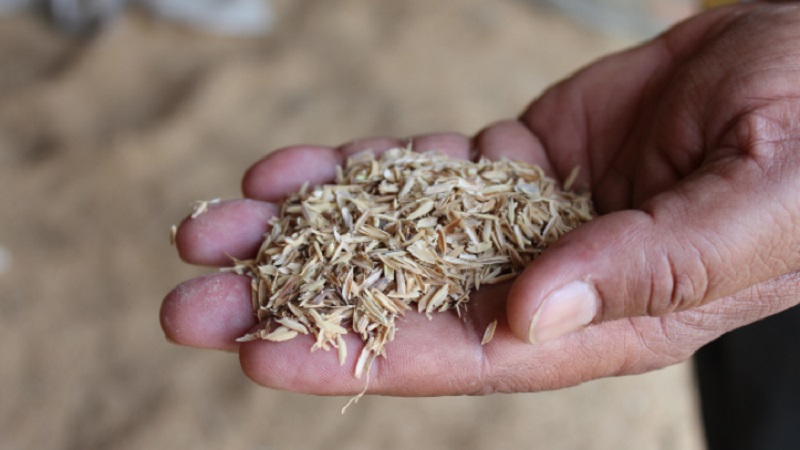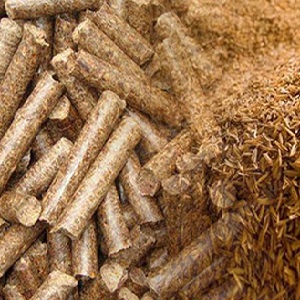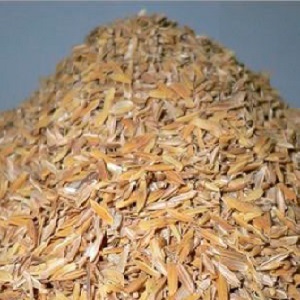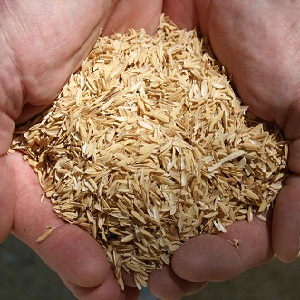The composition and features of the use of rice husk
Rice takes one of the first places among cereals. As a result of the separation of rice grains, about 600 million tons of waste is generated. Their disposal is a serious problem throughout the world. Most of the owners of this waste are unaware of the uses of recycled rice hulls. We will tell you how to use it in the garden.
The content of the article
What is rice husk and where does it come from
Rice hulls are the hulls of a grain of rice. It protects the kernel from pests... After the processing of rice grains, waste remains: straw, bran and flower scales (husks). Mass fraction of rice husk is up to 20% out of 30% of the total share of all waste.

Composition and characteristics of rice husk
Rice husk contains:
- water;
- crude fiber;
- protein;
- cellulose;
- pentosans;
- lignin;
- extract, soluble in ether;
- vitamins;
- mineral ash, which is 90-97% silicon dioxide (SiO2).
Key Features of Rice Hulls:
- highly flammable and does not burn if not blown with air;
- resistant to moisture and fungi;
- decomposes slowly due to high silica content;
- bulky and dusty, making it difficult to handle;
- when burning, the ash content is from 17 to 26%, which is much higher than that of wood (0.2-2%) and coal (12.2%);
- has a high calorific value - 3410 kcal / kg, therefore it serves as a renewable energy source.
Interesting facts about rice:
What is the difference between jasmine rice and basmati
Areas of application of processed rice husk products
There are a variety of methods for using rice hulls. For example, in stores there are fuel briquettes for barbecues, grills, barbecues, heating boilers, fireplaces and wood-burning stoves. Such a solid fuel is created on the basis of rice husks, has good heat transfer and low ash content.
Recycled rice husk is applied:
- in the field of agriculture as a fertilizer;
- in metallurgy as a heat-insulating backfill;
 in the fuel industry as a material for achieving high levels of burnup;
in the fuel industry as a material for achieving high levels of burnup;- in the chemical industry in the production of dyes, protective coatings, abrasive and lubricants;
- as a filler for car tires - they have excellent adhesion to wet and dry asphalt, reduce carbon dioxide emissions into the atmosphere, reduce noise levels and reduce fuel costs;
- in the manufacture of paper, cermets, artificial leather, etc.;
- as a sorbent for water purification from oil and oil pollution;
- in the manufacture of heat and sound insulation materials;
- in the production of concrete - has a low cost and is stronger than conventional artificial building material;
- in the agro-industry - the husk, which has been processed by high temperature and pressure, allows you to replace the usual soil and is repeatedly used for sowing one crop.
Pure silicon is obtained from rice huskswhich is used in modern technology. It is much cheaper than extracting it from other sources with more costly processing methods.
In the future, it is possible to use the obtained raw materials in perfumery, metallurgical, pharmaceutical and electronic industries.
Rice husk can be used in the production of building materials (blocks, slabs).Its use in the fuel industry will reduce emissions into the environment and introduce renewable energy sources into circulation.
Use in the garden as fertilizer
Some summer residents use rice husks to increase yields on your land:
 They add it to the compost, which maintains the optimal moisture level of the organic fertilizer.
They add it to the compost, which maintains the optimal moisture level of the organic fertilizer.- They are introduced into heavy clay soil due to the fact that it rotates for a long time. The earth loosens immediately and for a long time. If you do this regularly, the soil will become more structured, softer and fertile over time.
- The husks are burned to obtain potassium-rich ash. It is used to increase soil fertility and to feed plants.
- Used for planting vegetables (peas, tomatoes, eggplants, cabbage, potatoes, peppers, etc.), seedlings of fruit trees and shrubs.
- Used as a nutrient medium for microorganisms when growing seedlings. In such a soil, shoots of fruit and berry crops are well strengthened by roots.
- Used for greenhouse cultivation of plants, mushrooms, flower fertilization.
- Rice husks are scattered in a dense layer of 15 cm over the surface of the land plot before planting and set on fire. This is not easy to do, since the husk is highly flammable. The resulting ash is buried in the upper layers of the soil using a shovel or rake.
For maximum effect of rice flower scales do not mix it with other organic or mineral fertilizers.
Read also:
Rice husks as mulch
It is difficult to grow a decent crop without mulch. Plants hardly tolerate a lack of moisture, the soil dries quickly, and a dense crust forms on the surface.
Rice husk mulch solves such problems:
 improves the chemical composition of the soil;
improves the chemical composition of the soil;- protects against weeds and slugs;
- prevents moisture loss;
- reduces the amount of watering;
- removes excess nitrogen;
- retains useful properties in the soil for 3-5 years;
- reduces the accumulation of salts in the soil.
Rice husks serve as mulch for a long time, since weeds cannot break through it, and pests do not get to the roots for wintering. It is distributed over the surface of the earth in an even layer.
Important! It takes a lot of water to moisten the soil under the mulch. The liquid hardly seeps through the dense layer of husk, but at the same time, the husk is easily washed away under the strong pressure of water.
Conclusion
For the benefit of humanity, not only rice grains are used, but also processed flower scales. Gardeners use the husk as fertilizer and mulch to improve soil structure, protect against erosion and moisture loss.
Husk contains a large amount of silicon dioxide and is used in various industrial sectors. So far, its potential is little used, but movement in this direction is considered promising.